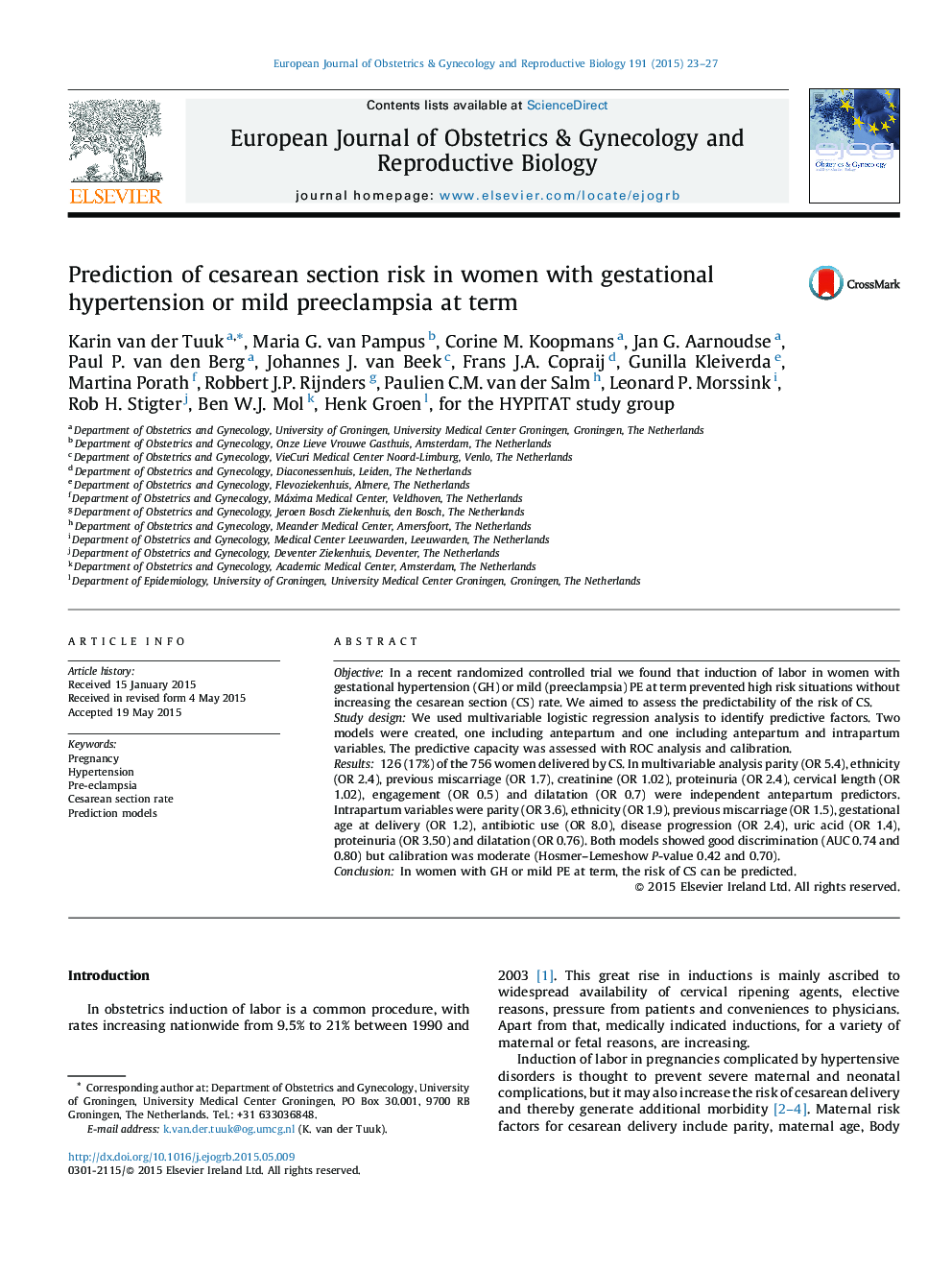| Article ID | Journal | Published Year | Pages | File Type |
|---|---|---|---|---|
| 3919529 | European Journal of Obstetrics & Gynecology and Reproductive Biology | 2015 | 5 Pages |
ObjectiveIn a recent randomized controlled trial we found that induction of labor in women with gestational hypertension (GH) or mild (preeclampsia) PE at term prevented high risk situations without increasing the cesarean section (CS) rate. We aimed to assess the predictability of the risk of CS.Study designWe used multivariable logistic regression analysis to identify predictive factors. Two models were created, one including antepartum and one including antepartum and intrapartum variables. The predictive capacity was assessed with ROC analysis and calibration.Results126 (17%) of the 756 women delivered by CS. In multivariable analysis parity (OR 5.4), ethnicity (OR 2.4), previous miscarriage (OR 1.7), creatinine (OR 1.02), proteinuria (OR 2.4), cervical length (OR 1.02), engagement (OR 0.5) and dilatation (OR 0.7) were independent antepartum predictors. Intrapartum variables were parity (OR 3.6), ethnicity (OR 1.9), previous miscarriage (OR 1.5), gestational age at delivery (OR 1.2), antibiotic use (OR 8.0), disease progression (OR 2.4), uric acid (OR 1.4), proteinuria (OR 3.50) and dilatation (OR 0.76). Both models showed good discrimination (AUC 0.74 and 0.80) but calibration was moderate (Hosmer–Lemeshow P-value 0.42 and 0.70).ConclusionIn women with GH or mild PE at term, the risk of CS can be predicted.
